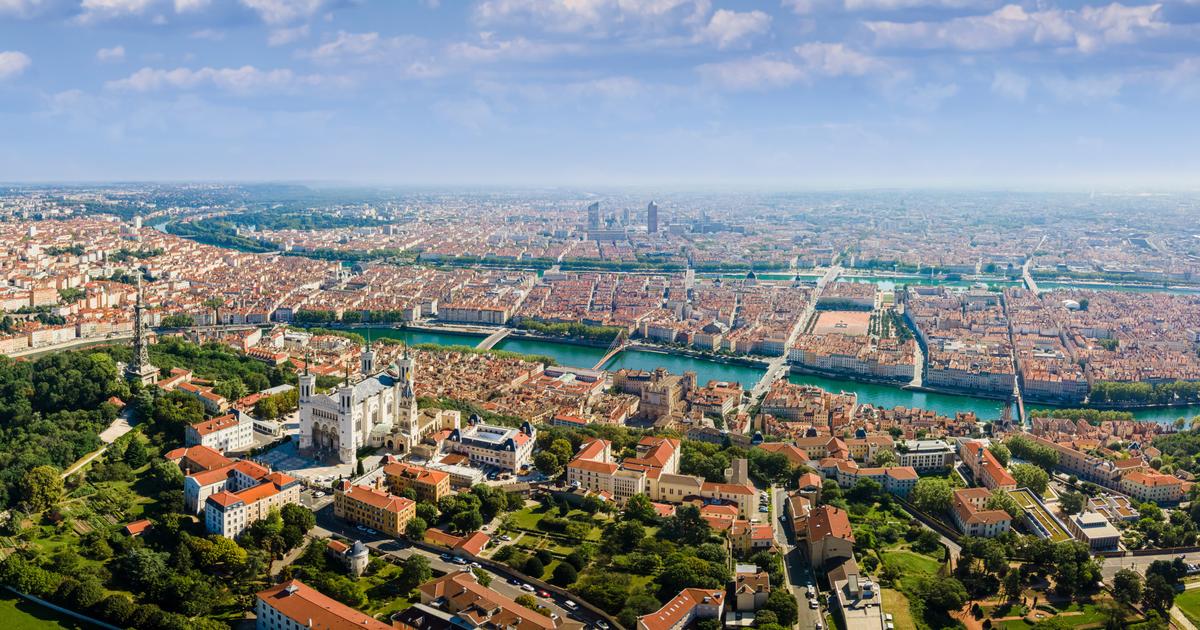Kyrgyzstan: History, Politics, Population, and Geography
Created: 12/21/2021, 3:03 PM
Yurts in Kyrgyzstan © bizoo_n / IMAGO
The state of Kyrgyzstan, also known as Kyrgyzstan or Kyrgyzstan, belonged to the greater empire of the Soviet Union until independence in 1991.
The country's politics alternate between stable democracy and unrest with subversion.
The geography of the country and regular earthquakes put a strain on the economy and the national budget.
That is why Kyrgyzstan is today the second poorest country in Central Asia, despite the best efforts of the government.
Bishkek - The Kyrgyz Republic is a country full of extremes.
The extraordinary geography and history as part of the Soviet Union create special conditions.
The weak economy with a large black market is slowing the country down to this day.
State of Kyrgyzstan: The land of forty tribes
Kyrgyzstan is a former Soviet republic with a size of almost 200,000 square kilometers and about 6.5 million inhabitants.
Around a million of them live in the capital Bishkek in the north of the country.
It is a landlocked country with no access to the sea.
The neighbouring countries are:
Kazakhstan in the north
China in the south
Tajikistan in the southwest
Uzbekistan in the west
The country's name is officially the Kyrgyz Republic, but more common are Kyrgyzstan, Kyrgyzstan, or the obsolete Kyrgyzstan.
Internationally common is Kyrgyzstan, which comes even closer to the name "kyrgyz" in the local language.
The Kyrgyz people are convinced that their country name can be traced back to the term “kirkkyz” which equals “forty” - a reference to the 40 tribes that founded the country and whose descendants they are.
Kyrgyzstan: geography, vegetation and wildlife of the state
With more than 90 percent of the country's area at an altitude of 1,500 meters and more, Kyrgyzstan is one of the highest countries in the world.
Almost the entire state area is mountainous and only 20 percent of it is suitable for agriculture.
This includes the steppe areas in the north and south of the country.
Only about four percent of Kyrgyzstan is covered by forest, which makes the state one of the least forested countries in Asia.
Nevertheless, there is the largest walnut forest in the world in the Jalalabat area.
The high mountains of Tian Shan are still relatively young and, thanks to strong tectonic movements, repeatedly cause earthquakes.
The highest mountain in the country is the Dschengisch Tschokusu with a height of 7,439 meters.
It is located in the easternmost tip of Kyrgyzstan on the border with China.
Vegetation and wildlife in Kyrgyzstan
The mountain meadows and slopes of Kyrgyzstan offer an incomparable habitat for many different animal species:
Brown bear and wolf
Lynx and martens
Siberian deer and wild boar
Rare species such as the snow leopard, the Siberian ibex or the manul are also native to Kyrgyzstan.
Protected areas such as the Sarychat-Ertash nature reserve, south of Lake Issyk-Kul, are intended to protect the rare animals from poaching.
Kyrgyzstan - story of a hard life in the Kyrgyz mountains
Settlement of today's Kyrgyzstan could be proven for a period around the 8th century.
Little is known about the ethnic groups and language.
It is clear that the region belonged to the Mongol empire of Genghis Khan and his descendants from 1219 until it was occupied by the Chinese in the 18th century.
Control by China was replaced in the second half of the 19th century by a conquest from the north, by the Russian Empire.
From 1876 until the collapse of the Soviet Union in 1991, Kyrgyzstan was part of the Russian empires and federations.
Russia supported the economic development of the Kyrgyz north.
The south lagged behind and received hardly any funding.
Development after independence from the Soviet Union
Kyrgyzstan was one of the Soviet republics that managed to transition from Russian control to independence quite smoothly.
The then incumbent President of the Soviet Republic Askar Akayev was elected President of the new, independent state in the same year.
The country was considered an "island of democracy" in comparison to the other former states of the Soviet Union.
That was to change towards the end of the 20th century, when Akayev ruled increasingly authoritarian and secured far more power through constitutional changes.
The country developed into a presidential democracy, which led to discontent that erupted into unrest.
The driving force behind this was a conflict between the poorer south and the richer north.
In 2005 there was the "tulip revolution" that led to the overthrow of President Akayev.
His successors tried to strengthen their position of power by further amendments to the constitution, which caused renewed dissatisfaction, demonstrations and violent unrest in 2010. President Kurmanbek Saliyevich Bakiyev fled to Kazakhstan.
The transitional government under Rosa Otunbajewa took the opposite path and ousted the presidency with a constitutional reform.
It created a parliamentary republic, which was repealed in 2021 by a constitutional referendum.
State of Kyrgyzstan: population demographics
The population of Kyrgyzstan is made up of the indigenous Turkic peoples and various immigrant ethnic groups.
The largest groups include:
65 percent Kyrgyz people
14 percent Uzbeks
13 percent Russians
each about one percent Dungans (Chinese Muslims), Uyghurs, Ukrainians, Tajiks, Tatars and Kazakhs
The average age of the population is quite low at around 26 years.
The birth rate is 2.6 children per woman.
Kyrgyzstan has two official languages: Kyrgyz and Russian.
As a Turkic language, Kyrgyz is related to Uzbek, Kazakh and Turkish.
More than 70 percent of the population speak Kyrgyz as their mother tongue.
Russian made communication with the former Soviet states easier and is therefore spoken as a second language by more than 30 percent of Kyrgyz people.
Religion and its effect on regional differences
During the times of the Soviet Union, freedom of religion existed, albeit with restrictions and clear demarcation from public life.
With independence, the Islam traditionally practiced in the country revived.
Most of the residents of Kyrgyzstan are followers of Sunni Islam, but can be described as moderate.
About a fifth are Christians and followers of the Russian Orthodox Church.
Most of them live in the north of Kyrgyzstan.
Religion contributes to the differences between the economically strong, less religious, Russian-influenced north and the poorer, religious and conservative south.
This discrepancy has repeatedly been the driving force behind unrest and power struggles in the past.
Kyrgyzstan: weak economy and low per capita income in the state
After the collapse of the Soviet Union, the economy of Kyrgyzstan had to reorganize.
In the first ten years after independence, the previously heavily nationalized economy was slowly privatized.
About three quarters of the arable land was distributed to private agriculture.
There were innumerable start-ups of family businesses in all economic sectors.
Today, the country's gross domestic product (GDP) is mainly composed of the following sectors:
Agriculture (almost 35 percent of GDP): cultivation of wheat, potatoes, sugar beets, vegetables, tobacco and cotton
Services (over 35 percent): retail, food and handicrafts
Tourism: very weak, most likely adventure and hunting trips
Mining: Extraction of mineral resources, rare earths and gold
Industry: very weak since independence, growth in the textile and food industries
Kyrgyzstan was the first CIS state that could become a member of the World Trade Organization.
Due to the encircled location in Central Asia, the country is nevertheless heavily dependent on trade with neighboring countries as well as Russia and China.
Nepotism and black markets
Politicians and the people of Kyrgyzstan have been trying for years to lead the second poorest country in Central Asia out of the crisis.
However, changing power relations in the government repeatedly undermined aspirations for more freedom and political security.
The constitution guarantees citizens the most important human and fundamental rights.
Restrictions on freedom of the press and freedom of expression are the order of the day.
The police and the military often act arbitrarily.
There have been documented cases of torture in police custody.
At the same time there is political nepotism, tax fraud, taking advantage and corruption.
According to economic experts, half of the Kyrgyz gross domestic product seeps into the country's black markets and thus does not contribute to economic stabilization.
Despite this, we have succeeded in significantly lowering inflation and the unemployment rate in recent years.
The close cooperation with foreign investors in the mining of natural resources should help the country into a secure future.









